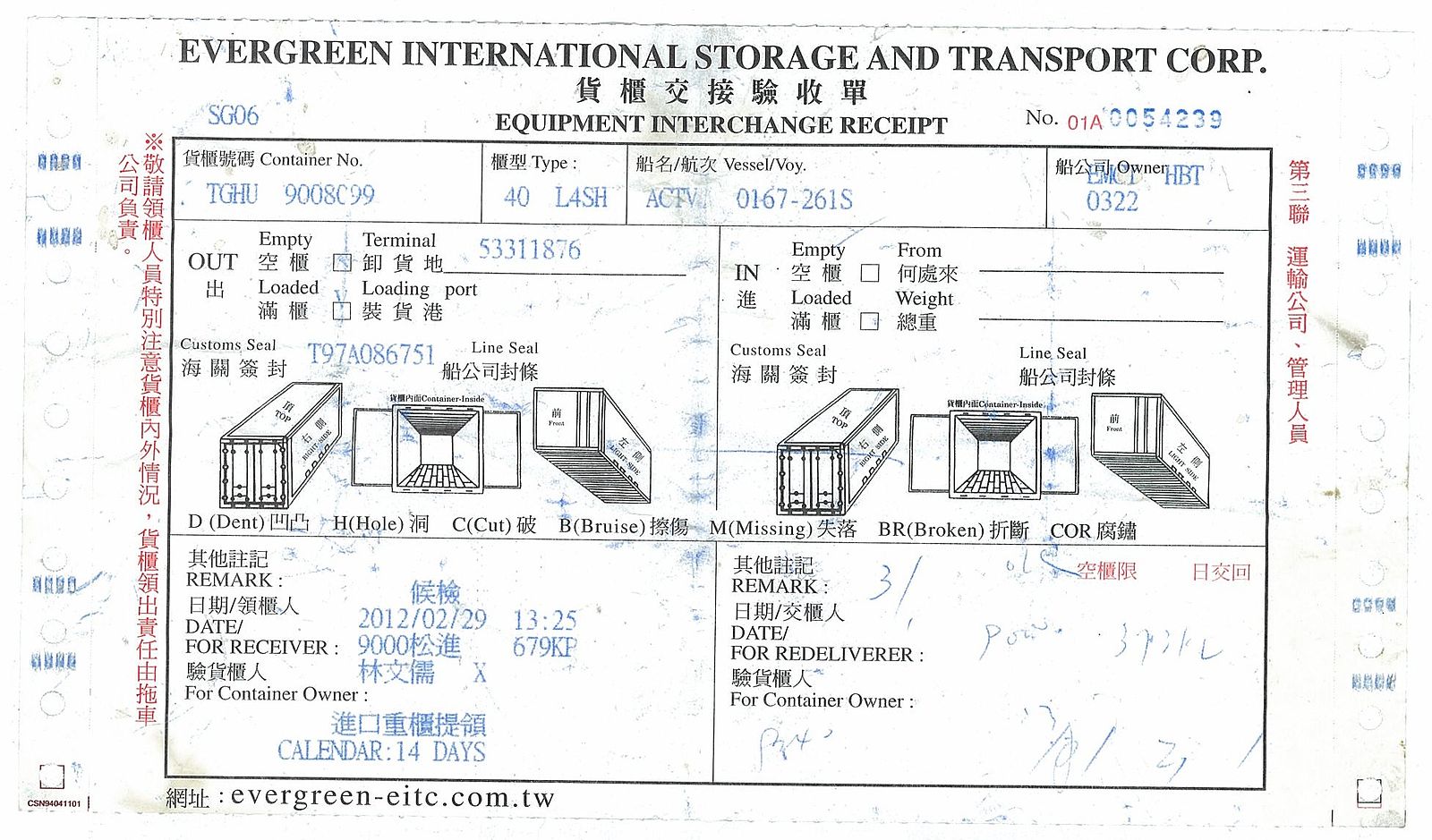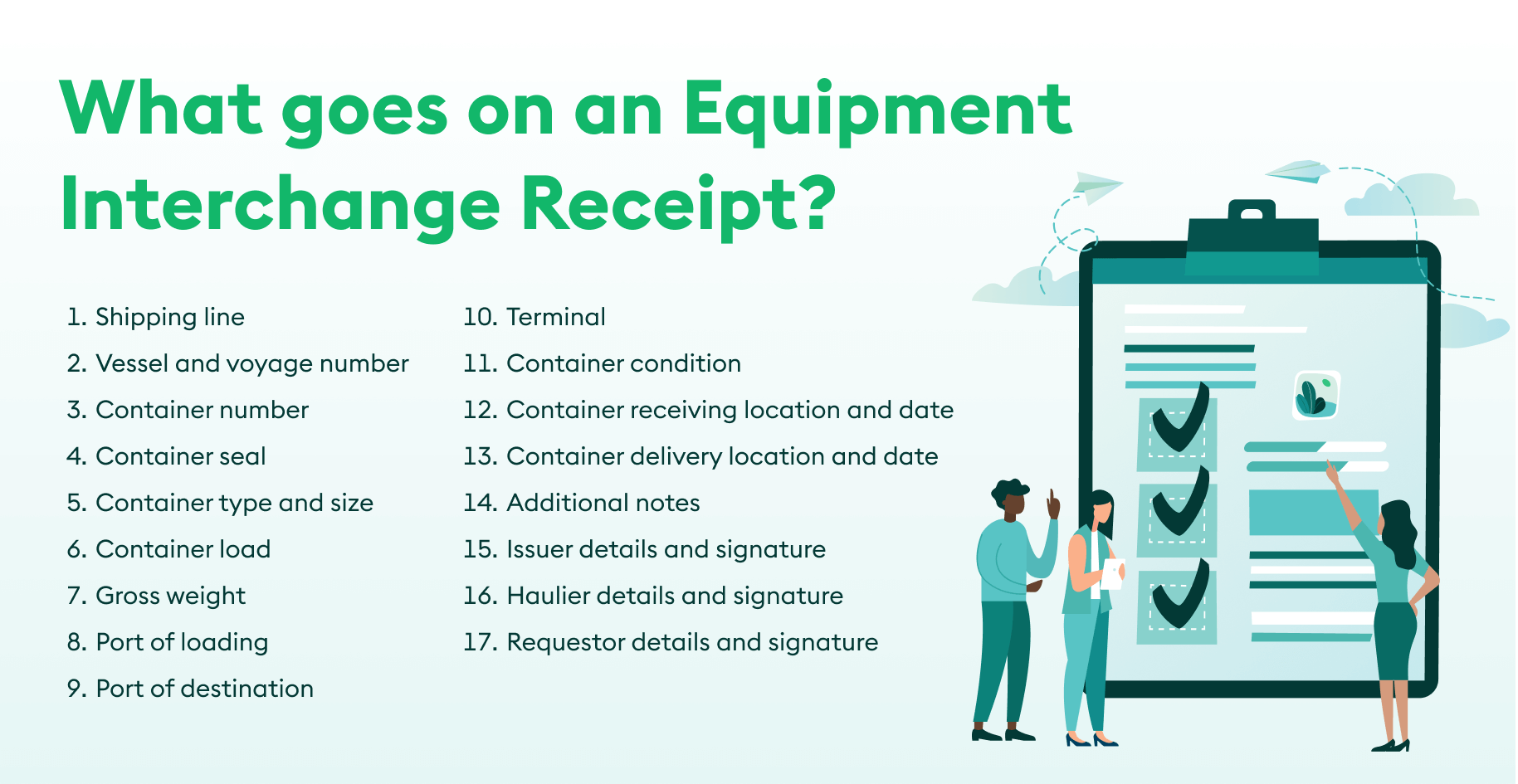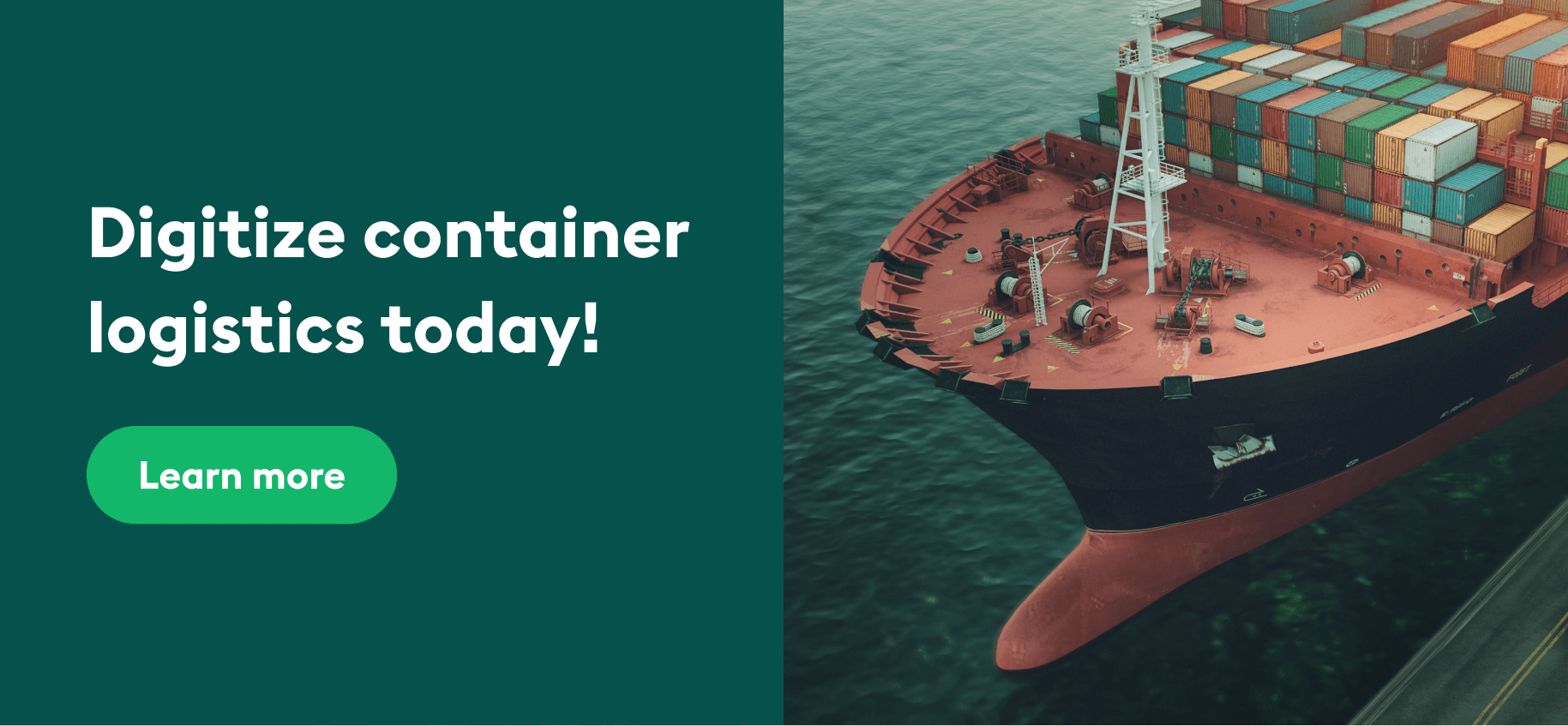Knowing what an equipment interchange receipt is advantageous when it comes to shipping. This is mainly because most carriers are heavily reliant on proper documentation. Read on to know what it means and why you need it.
Being in the shipping industry, you know the importance of having all your documents ready for clearance. One such document is the equipment interchange receipt.
This document is crucial as it serves as a receipt and it documents the condition of a container. Thus, helping to understand who should be held accountable for, in case, of any damages or discrepancies.
Think of it as a sort of “check-in, check-out” system for containers. Just as you might check out a library book and then return it, the EIR tracks the movement of the box from the moment it leaves one party’s possession to when it arrives at another’s. Let’s understand this term in detail.
What is an Equipment Interchange Receipt (EIR)?
When you transfer a cargo container from one vessel to another to/from a terminal, you’ll need a document called an equipment interchange receipt (EIR). The equipment interchange receipt lists the container number, the code of the vessel/voyage, the stacking position, and the stowage position.
An EIR confirms that your container is transferred between the two locations. Each time this document is issued, your container goes through an inspection to check its condition and to be sure that it has all its shipment details.
This document is given to the haulier when the containers are delivered or collected (loaded or empty) from the container terminal. The information in the EIR is updated at every interchange point. Sometimes, it also includes information on any damages to the container that helps to identify the responsible parties.
So, let’s say you import and export large quantities of wood logs to big construction companies. You need to move your box between Shanghai and Chicago, this is where you notice that an EIR is an important document to have. You need to know the status of your shipment in order for things to process smoothly.

Why is an Equipment Interchange Receipt important?
Let’s look at the above example of wood logs again. Here, your shipment from Shanghai to Chicago has more than one stopover along the way. You have all the necessary documents in place except for the EIR, so you don’t get an inspection done for your box at any interchange points. Now, you don’t know the damage it faced on the way till it reaches its destination. To your dismay, even your cargo is damaged in the process, and there goes your deal.
An EIR is important here because it’s documenting your container condition, shipment information, and where your box is moving to. The trucker also understands which container needs to be picked up and where it should be dropped off. You want to make sure that your container is seaworthy and an EIR can help this process because of the full container condition inspection that’s required before the receipt is issued.
Who issues an Equipment Interchange Receipt?
Generally, the shipping line or carrier issues this document to the shipper to pick up or deliver the containers. This is because they’re the ones who own the containers and are monitoring and coordinating the movements between the interchange points. The shippers or freight forwarders then relay the information to their customers.
Even though shippers and forwarders may act as carriers, they can’t issue equipment interchange receipts because they are not the original owners of the containers.
How is an EIR generated?
Each carrier has its own specific template, so ground-level operators will fill in a template of this form and make a copy of it. The trucker as well and the requestor receive a copy. There’s a lot of information on an EIR, so it’s important to take great care and not rush through the process. Let’s have a look at everything you’ll find on an equipment interchange receipt:
What’s on an Equipment Interchange Receipt?
Each EIR template is specific to the carrier and depends on the type of move, as well as location. What’s vital here is container condition and relevant shipping information. Here’s what you’ll typically find:
| Shipping line | Name of the carrier owning the shipping container |
| Vessel and voyage number | The name of the vessel and its unique voyage number |
| Container number | The unique number assigned to the container |
| Container seal | Unique seal number of the box |
| Container type & size | Type and size of the containers |
| Load | Indicates whether the container is full or empty |
| Gross weight | Weight of the container |
| Container condition | The container is inspected to determine damages |
| Port of loading | The origin port where the box was loaded onto the vessel |
| Destination port | The destination port where the box was unloaded from the vessel |
| Terminal | The terminal at which the container moves to or from |
| Receiving location and date | The location of where the container is sent to, and the date that it was received |
| Delivery location and date | Delivery location of the container and the date on which it’s meant to be delivered to the next interchange point |
| Additional notes | Extra information or notes made after the inspection |
| Issuer details and signature | The carrier’s signature and date as well as their details are filled in here |
| Haulier details and signature | Name of the trucker appointed and their signature |
| Requestor details and signature | The requestor’s details and signature |
Equipment interchange receipt vs. Container interchange report
Both equipment interchange receipt and container interchange report (CIR) refer to the same document, however, ‘report’ is used in place of ‘receipt’ as some EIRs focus on the inspection and condition of the container. It comes across more like a report then. Both terms are used interchangeably within the industry and are no different.
Equipment interchange receipt and Equipment interchange report: What’s the difference?
Most terminology within the industry can be confusing, some words may have the same meaning, yet are separated by just one word. Like an EIR and CIR are one and the same, so is the equipment interchange report and equipment interchange receipt. Both terms refer to the same document and are used interchangeably.
How Container xChange can help with Equipment Interchange Receipt
Now that you’re all clued up on equipment interchange receipt, have you heard of an interchange agreement? If not, let’s break it down for you:
A container interchange agreement is a document verifying an agreement between two ocean carriers for
- The exchange of empty containers and all related equipment.
- The transportation of the equipment is required by the receiving carrier.
Both carriers sign the document to verify a container interchange for delivery to its final destination. You’ll use this agreement when leasing containers. SOC or Shipper Owned Containers belong to individual shippers who then hire a carrier to transport goods. SOC containers save you time and money as well as increase flexibility, however, sourcing one might not be as easy. You can do this easily with Container xChange.
Container xChange is the world’s first neutral marketplace for container leasing and trading. We offer you digital logistics solutions available on one easy-to-use platform. Here you can interact and connect with 1500+ vetted members across 2500+ locations worldwide. If you’re looking to lease SOC containers, you simply have to hop on to our leasing platform, type in the desired location, and container type, and click search. You’ll be able to see a list of suppliers who are ready to help you. Choose a deal that’s best for your wallet and cut out the middleman. You’ll also get to choose other benefits from xChange such as container insurance, near real-time tracking, surveying, and an all-in-all digital payment feature.
Click on the banner below and our team of experts are here to help you take a quick tour of the platform and answer all your queries.
Equipment interchange receipt: Common FAQs
What does EIR stand for?
EIR stands for Equipment Interchange Receipt and confirms that your container has been transferred between the two locations.
Who issues equipment interchange receipts?
The shipping line will be the one to issue these documents. This is because they’re the ones who own the containers and are monitoring and coordinating their movements between the interchange points.
Why are equipment interchange receipts important?
An equipment interchange receipt is important because it’s documenting your container condition, the shipment information, and where your box is being moved.




